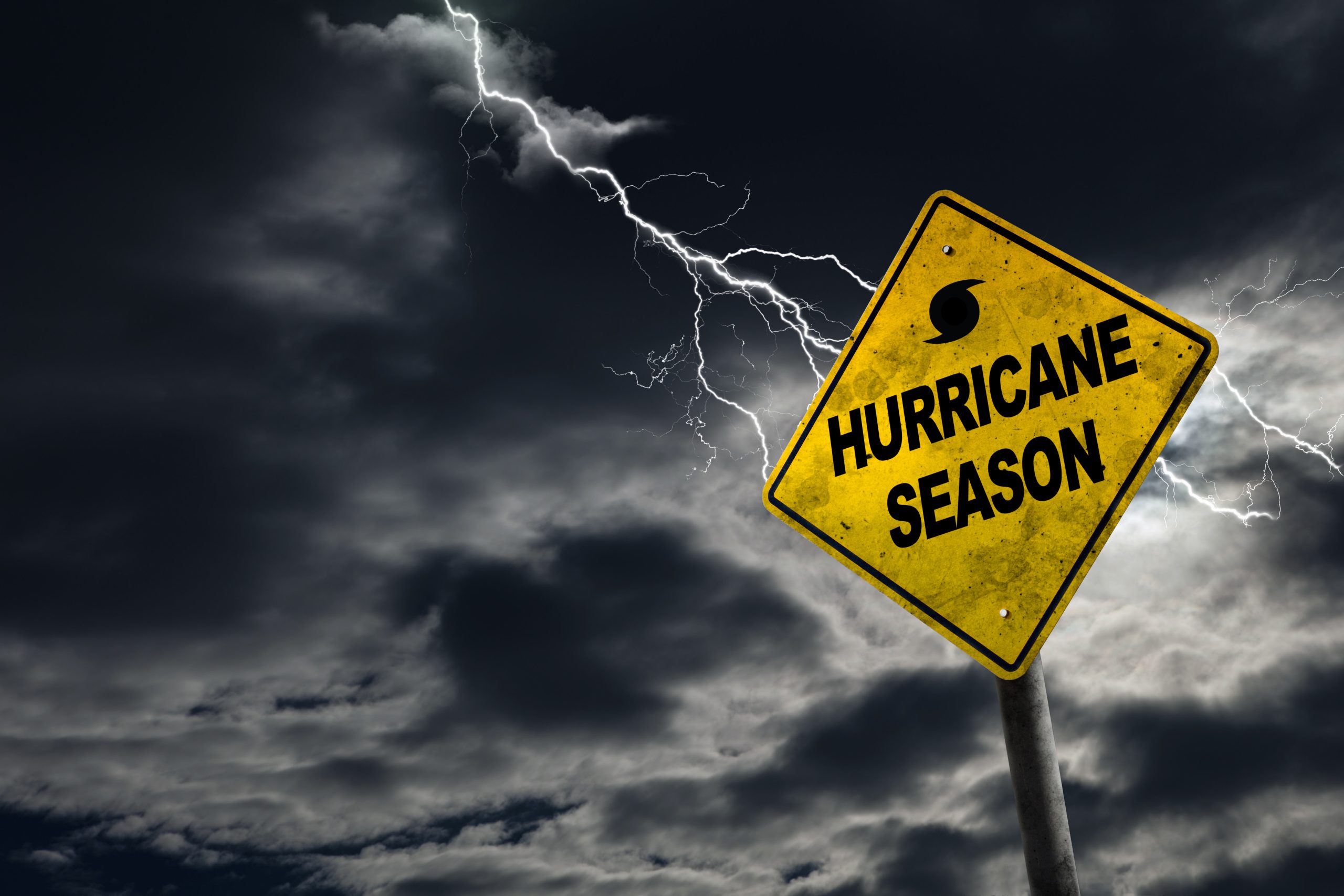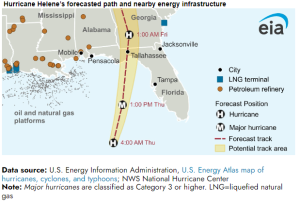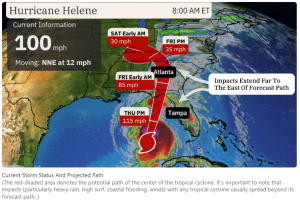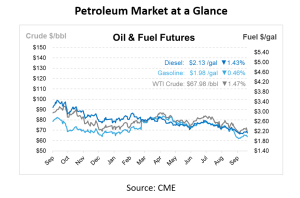
Hurricane Helene: Is Energy Infrastructure at Risk?
Hurricane Helene is poised to make landfall as a Category 3 hurricane on the eastern part of the Florida Panhandle late Thursday. With sustained winds reaching 115 miles per hour, Helene is the most powerful storm to impact the United States this hurricane season, surpassing the earlier storms—Beryl, Debby, and Francine—categorized as either Category 1 or 2.
According to the U.S. Energy Information Administration (IEA), while Helene’s projected path toward the Florida Big Bend coast diverts it from the primary oil and natural gas-producing regions in Texas, Louisiana, and Mississippi, its potential impact on energy infrastructure is significant. A Reuters article notes that major oil companies, including BP, Chevron, Equinor, and Shell, have proactively evacuated personnel from offshore oil platforms and halted some production activities in the Gulf of Mexico ahead of the storm.

Data from the Bureau of Safety and Environmental Enforcement (BSEE) reveals that as of 12:30 PM ET on September 25, approximately 29% of oil production (equating to 511,000 barrels per day) and 17% of natural gas production (about 313 million cubic feet per day) on offshore platforms have been shut down. Additionally, staff have been evacuated from 17 production platforms, representing nearly 5% of the 371 manned platforms operating in the Gulf.
The U.S. Coast Guard has announced closures of several ports along the Gulf Coast. Notably, Port Tampa Bay, which typically handles over 17 million tons of petroleum and natural gas-related products annually, has halted all inbound and outbound vessel traffic. The extent and duration of these port closures, along with the overall impact of Hurricane Helene on trade movements in the energy sector, remain uncertain.
Utilities across Florida are gearing up for potential widespread power outages due to high winds, flooding, and storm surges associated with the hurricane. Energy infrastructure, including power plants and transmission lines, may also be severely affected.
According to the Weather Network, here is the timeline for Hurricane Helene’s impacts:
- Thursday: Helene is expected to reach its peak intensity as a major Category 3 or stronger hurricane in the eastern Gulf before making landfall along the Big Bend of Florida Thursday night. The storm’s impacts—such as surge, winds, and rain—will be felt far from the landfall point, typical of larger storms.
- Friday: Helene will probably sweep quickly northward through the Southeast toward the southern Appalachians and Ohio Valley, bringing strong, potentially damaging wind gusts, flooding rain, and isolated tornadoes.

According to the National Oceanic and Atmospheric Administration (NOAA), Helene’s path includes urban areas like Tallahassee, Florida, and Atlanta, as well as Asheville, North Carolina.
The U.S. Energy Information Administration (EIA) provides energy disruption maps to assist industry stakeholders in monitoring the storm’s impact by featuring real-time storm information alongside energy infrastructure locations.
Stay In the Know
Mansfield Energy will continue to monitor Hurricane Helene’s progress, ensuring that businesses and customers in the storm’s path receive timely updates on any developments that may affect their operations. With extensive industry expertise, Mansfield offers a robust Emergency Response Program, which incorporates best practices to ensure continuity during emergencies. The program emphasizes a multi-layered approach, prioritizing essential services and collaborating with key partners to maintain seamless fuel distribution during crisis situations.
For those living or operating businesses in hurricane-prone regions, the challenges posed by severe storms are all too familiar. In addition to widespread power outages and flooding, refueling vehicles and equipment can become a major hurdle, with fuel shortages and long wait times at retail stations adding to the difficulty. Mansfield’s Emergency Response Fuel Program offers the tools and resources needed to effectively prepare before a storm and ensure access to fuel in its aftermath. Learn more about our Emergency Response Program, how to prepare for storms, and what to do after they pass.

This article is part of Daily Market News & Insights
Tagged:
MARKET CONDITION REPORT - DISCLAIMER
The information contained herein is derived from sources believed to be reliable; however, this information is not guaranteed as to its accuracy or completeness. Furthermore, no responsibility is assumed for use of this material and no express or implied warranties or guarantees are made. This material and any view or comment expressed herein are provided for informational purposes only and should not be construed in any way as an inducement or recommendation to buy or sell products, commodity futures or options contracts.





